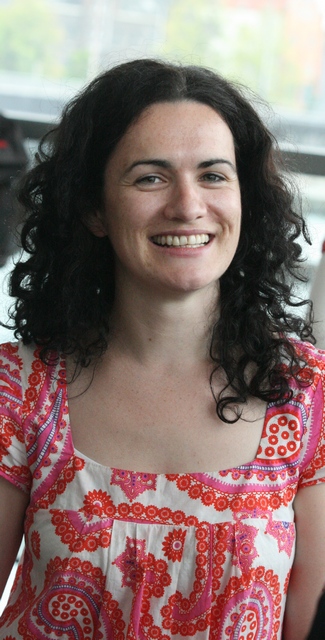MusicNow closes season on mixed, deafening note

The final MusicNOW program of the season offered a contrasted lineup of five works Monday night at the Harris Theater, though the highly variable quality of both the music and presentation ended the Chicago Symphony Orchestra’s new-music series on a decidedly uneven note.
Both of the CSO’s composers in residence, Mason Bates and Anna Clyne, were represented. Written for Chanticleer, Bates’ Sirens (2009) for 12 voices seeks to depict the eternal mystery and sensual appeal of the sea sirens throughout history with three movements inspired by a trio of literary texts. Bates’ choral writing is rudimentary in places but mostly skillful and often imaginative. The extended central movement, inspired by Heine’s poem Die Lorelei, is the most striking with its pulsing, rhapsodic expression. Duain Wolfe led a capable if rather plain-spun performance with a dozen singers from his CSO Chorus, which didn’t seem to capture the haunting evocative nature of the music.
Gabriela Lena Frank’s Tres Homenajes: Compadrazgo from 2007 is scored for piano and string quartet. The “three homages” are tied together by South American inspirations most notably the concept of compadrazgo (camaraderie) manifested in different ways.
“Scherzo para Sipan” reflects the windswept northern plains of Peru with jumpy, motoric music, hard pizzicatos and aggressive piano chords. The middle section (“Adagio para Amantani”) paints the title island, situated in Lake Titicaca between Peru and Bolivia, and the stormy finale “T’inku” depicts the ritual fighting matches between two men from different villages.
The Adagio is the heart of the work, an introspective threnody that reflects Amantani’s austere landscape, with a long ruminative cello solo, played with great feeling and refined tenderness by Joshua Zajac. The work on the whole is characteristic of Frank, both in its hard angularity, impressionistic Latin-American coloring and a tendency to meander. Violinists Nancy Park and Hermine Gagne, violist Diane Mues, cellist Zajac and pianist Amy Briggs delivered an impassioned performance.
Irene Buckley’s Rotation of the earth was inspired by her viewing of Foucault’s pendulum in Paris and noting that its arc was not entirely even due to the earth’s movement. The young Irish composer’s electronic piece has a certain hypnotic quality, building with pulsing wavelike motions that grow in textural richness and asymmetric complexity before receding to silence. This is compelling music and Joshue Ott’s real-time projected visual improvisations — like a high-tech, digital Etch A Sketch — provided a colorful visual enhancement to Buckley’s music.
The one outright clinker of the evening, surprisingly, was Rapture by Anna Clyne. This 2005 virtuoso showpiece calls for amplified clarinet and electronics. John Bruce Yeh delivered a tour de force performance of the bravura writing and Ott again provided striking projections.
But to put it kindly, this is not one of the gifted British composer’s more inspired efforts. Whether an accident or by design, the souped-up volume subjected the audience to a cochlea-damaging assault that was painful to experience. The six minutes felt interminable and the deafening fusillade of piercing musical screeches would likely find more effective utility as sonic water-boarding used to interrogate prisoners at Gitmo.
Yeh was heard to better advantage in the closing work, Lumens (2005) by Sean Shepherd. Scored for flute, clarinet, violin, cello, piano and percussion, the music segues from lonely clarinet notes and aggressive piano fragments into jagged, halting quasi-serial momentum for the ensemble. After continuing in this vein somewhat longer than necessary, the music slows and the phrases grow longer before the hectic bustle returns. The work is about “gratitude,” says Shepherd and Lumens shows an intriguing and individual compositional voice. The ensemble delivered a rambunctious performance under conductor Cliff Colnot.
Like much else about the musical details, it wasn’t made clear whether the amplification for the Frank and Shepherd works were called for in the scores or whether it was done to boost the instruments’ presence. Whatever the case, it only succeeded in adding a raw overlay to the performances and put a harsh glare around some fine string playing.
The CSO really needs to address the ongoing presentation deficiencies of this series, which were often little short of amateurish Monday night. In addition to the season-long flimsy sheet that is supposed to be hip and take the place of traditional program notes, the low-fi audio quality of the video introductions made most of the composers’ comments virtually unintelligible.
That’s a disaster not only for harried critics on deadline but for anyone seeking basic information and background material on the composers and works being performed. Get with it, guys.
Posted in Uncategorized




